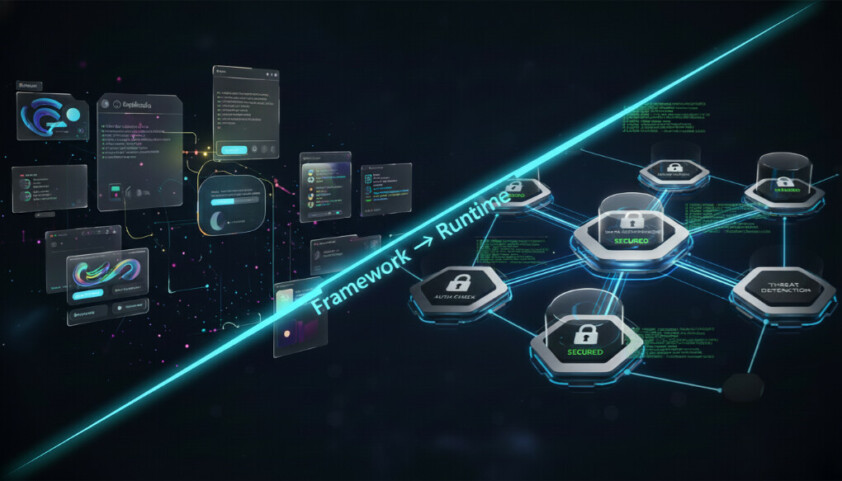Here’s something I’ve noticed in vendor demos: everyone promises “enterprise-grade security” until you ask how it actually works. Then things get vague.
The slides look great. The workflow builder is smooth. But ask about access control enforcement, and suddenly you’re hearing about “best practices” and “secure by design” without seeing the actual machinery.
This matters because 69% of organizations cite AI-powered data leaks as their top security concern in 2025. Yet 47% have no AI-specific security controls in place.
The Question That Reveals Everything
“At runtime, how does your platform enforce per-agent ACLs over tools, memories, and outbound network calls, and where are those decisions logged?”
If they can’t answer precisely, you’re looking at a framework where security becomes your homework. Not a runtime that enforces it at the infrastructure level.
What a Real Answer Actually Includes
A proper runtime doesn’t delegate access control to application code. It enforces it before your code runs.
Each agent gets its own identity. No shared API keys. No global credentials. When Agent A calls a tool, the system recognises it as Agent A, not a generic process with administrative rights. NIST’s Zero Trust Architecture makes this principle clear: authentication happens before each session, not once at startup.
Policies sit between agents and everything else. Before tools run, memory is accessed, or network requests are sent, the runtime checks declarative rules. These policies attach to agents, tools, memory namespaces, and destination hosts. Enforcement occurs at the infrastructure level, not through application checks.
McKinsey reports that agentic AI introduces “chained vulnerabilities” where issues cascade across agents. You need enforcement at the runtime layer.
Every tool call gets intercepted. The runtime validates policy, redacts sensitive fields, then executes. If an agent lacks permission, the call terminates before it leaves the runtime. An agent can’t social-engineer past security boundaries because the runtime enforces them independently of the model’s output.
Memory has granular boundaries. When agents query vector stores, policies filter results before relevance scoring. SmythOS SRE’s Candidate/ACL system requires explicit authorization for every operation.
Network egress gets controlled. Outbound calls require allowlist approval. Brokered credentials instead of exposed secrets. Unapproved destinations stop at the runtime layer.
Everything gets logged with tamper resistance. Structured events for every decision: who, what, why, which policy, inputs, outputs, redactions, and costs. SmythOS logging integrates with enterprise SIEM systems.
Show Me, Don’t Tell Me
When evaluating platforms, request this demonstration:
Create two agents with different roles. One can call Slack and read “CRM.customers.” The other cannot. Run both. Watch the denial happen in real time. Ask to see the exact policy line that blocked it.
Then kill the application SDK mid-execution. Policies should still be enforced because they live in the runtime, not the application.
Why This Gap Actually Costs You
A study reveals that only 6% of organizations have advanced AI security strategies, while 64% lack visibility into the risks associated with AI. Meanwhile, McKinsey projects that agentic AI could unlock $2.6 trillion to $4.4 trillion annually across more than 60 use cases.
That’s a massive opportunity cost. Security concerns slow deployment. Deployment delays prevent value realization.
SmythOS SRE treats security as an integral part of the infrastructure, not a feature. By embedding enforcement at the runtime level (orchestration for reliability, security for governance, memory for durability), SRE provides architectural guarantees rather than framework suggestions.
When agents interact with production systems, they require environments that enforce boundaries, log comprehensively, and fail safely. Not through developer discipline, but through runtime-level guarantees.
For teams moving agents from pilot to production, SmythOS SRE offers that foundation. Explore the platform on GitHub and star our repo. Additionally, connect with developers who are solving production AI challenges in our Discord community.
The distinction between frameworks and runtimes isn’t just technical terminology. It determines whether your agents actually reach production.
